Every mechanic knows how important it is to know the correct firing order of a truck engine. Knowing the right sequence will help minimize and stop engine vibrations.
The Chevy 350 engine is one of the most used engines in the market, so we’ll focus on the Chevy 350 Firing Order in this article. What is the firing order of the Chevy 350 engine?
The Chevy 350 firing order is 1-8-4-3-6-5-7-2. This basically means that besides the number 1 spark plug wire is the number 8 spark plug wire. Next to it is the number 4 spark plug wire and so on. This is read in a clockwise rotation.
Read on to learn more about the firing order for 350 Chevy engines, including the big block, small block, 5.3, and 5.7 engines.
Chevy 350 Firing Order

The 350 Chevy firing order is 1-8-4-3-6-5-7-2. This means that besides the number 1 spark plug wire is the number 8 spark plug wire. Next to it is the number 4 spark plug wire and so on. This is read in a clockwise rotation.
To understand this better, let’s first discuss what a firing order is.
What Is a Firing Order?
Basically, the firing order of an engine refers to the precise sequence wherein each cylinder receives a spark from the spark plug. The spark plug ignites the mixture of gas and air in a specific order. This is important if you want your Chevy 350 to achieve its maximum performance.
A Chevy 350 is a V8 engine. In which case, you can’t simply fire everything up simultaneously. Instead, it has to be done in a particular sequence. With the Chevy V8 firing order, the cylinders will have time to warm up and sync with each other.
Engines featuring multi cylinders are designed in such a way that their firing orders are highly coordinated. This enables smoother operation, reduces vibrations, and balances the engine. It also prevents engine fatigue. But, most importantly, it brings comfort and peace of mind to the driver and passengers.
The correct firing order of the Chevy 350 will allow you to experience smooth driving. Your vehicle will surely respond beyond your expectations. With an incorrect firing order, your driving and riding experience will be bumpy and uncomfortable. Worse, it can result in engine failure.
All vehicle manufacturers provide their own specific firing order for each of the engine variants that they use. Suffice to say that the firing order of the Chevy 350 engine is different from the firing order of its rivals.
If you want to achieve the maximum potential of your Chevy 350, it’s best to memorize its firing order.
The Importance of Firing Order
Incorrect Firing Order Will Affect the Engine’s Performance
The engine’s firing order has to be consistently correct. The spark plug wires can’t be mixed up. Otherwise, the engine might have starting issues or, if it starts, it will most likely run in an inferior condition.
Ignition Crossfires
Let’s talk about ignition crossfires. If two adjacent spark plugs fire right at each other, the space between the spark plug wires should not be too wide. This can result in a crossfire between the plugs.
The magnetic field resulting from the spark tends to fire the next spark plug prematurely. This will cause the engine to have a rough run and misfire. This can be prevented by crisscrossing the adjacent plug wires. This will cancel out the magnetic induction.
It’s a different case when it comes to engines featuring coil-on-plug ignition systems. With these engines, the ignition module or the engine computer controls the firing order.
An input signal is delivered to the engine computer coming from the crankshaft position sensor. There are engines where the input signal comes from the camshaft position sensor. This identifies which piston is moving up to the top dead center on the compression stroke. It will then fire the spark plug, the next spark plug, and so on according to the firing sequence.
Firing Order of the Chevy 350

The Chevy 350 engine forms part of the Chevy small-block engine family. They are referred to as small-block or SBC because they are noticeably smaller than their big-block counterparts. The big-block engines are also referred to as BBC.
SBC engines have a displacement ranging between 262 and 400 cu. At the same time, the BBC engines have a displacement ranging between 348 and 572 cu.
While all vehicle manufacturers assign different firing orders for each engine variant, the firing order for Chevy’s SBC and BBC variants are similar. The 350 Chevy small block firing order and the 350 Chevy big block firing order are both 1-8-4-3-6-5-7-2.
The digits refer to the number of the spark plug. To give you an idea, the “1” in the firing order 1-8-4-3-6-5-7-2 refers to spark plug number 1, “8” refers to spark plug number 8, and so on.
Cylinders are sequenced in a specific way. That way, vehicle owners and mechanics will be able to identify them. As for the Chevy 350, the cylinders are normally arranged to start from the front of the engine, at the driver’s side, to the back. Suffice to say that the front left cylinder is cylinder number 1.
From there, alternating numbers are starting from the left and going to the right. All the cylinders with odd numbers are on the left side of the engine. At the same time, all the cylinders with even numbers are on the engine’s right side.
In essence, the odd-numbered cylinders are on the driver’s side, while the even-numbered cylinders are on the passenger side.
350 Chevy Firing Order HEI Distributor Cap
A High Energy Ignition (HEI) distributor cap has its own firing order but is not necessarily different from the engine’s firing order.
As for most SBC Chevy engines, they make use of an HEI distributor. It is a tiny device that facilitates the transfer of electric energy from the ignition coil to the spark plug.
For the SBC Chevy 350 firing order HEI distributor cap, the firing orders follow a clockwise rotation. However, it’s not an issue as to where the number 1 position is on the distributor. The important thing is that the correct spark plugs are connected or in the right order.
The 350 Chevy firing order distributor cap should be in the same order as its engine. In other words, it should also be 1-8-4-3-6-5-7-2.
1-8-4-3-6-5-7-2 Chevy Firing Order
This Chevy small block firing order 1-8-4-3-6-5-7-2 generally works on most older V8 engines. It does not, however, work on the LSX series because it has its own specific sequence.
In general, V8 engines feature a cross-plane crankshaft design. This design is also present in some engines used by vehicle manufacturers such as Ford Winsor, Chrysler, and GM. The way Ford engineers number their cylinders makes it seem like the firing order is different. But the order is, in fact, similar to the Chevy 350.
Other Chevy Firing Orders
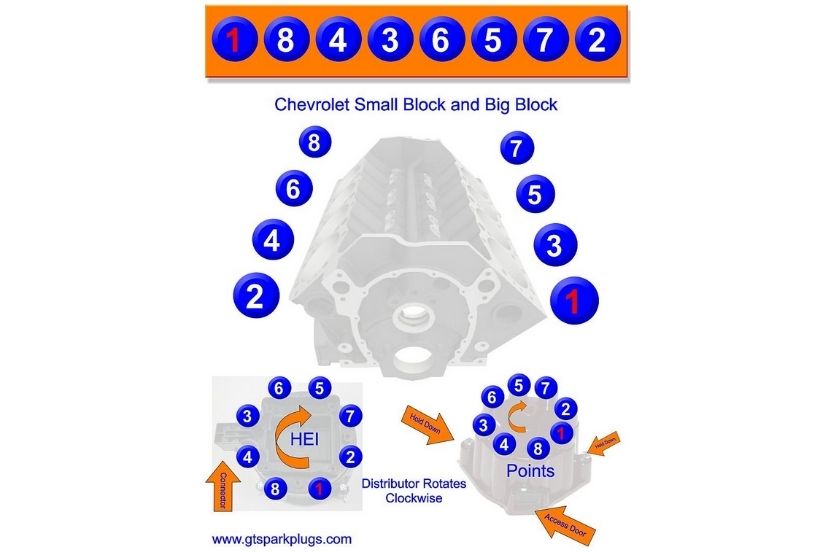
If you are getting a Chevy with a 5.3L or 5.7L engine, you’re probably wondering if their firing order is the same.
As for the 5.3L engine, the Chevy 5.3 firing order is 1-8-7-2-6-5-4-3. It is different from other Chevy vehicles with SBC motors. This firing order is typical for LS engines and definitely different from the SB or BB V8 engines.
When it comes to the 5.7L engine, the Chevy 5.7 firing order is 1-8-4-3-6-5-7-2. The 5.7L Chevy generally has a 350 engine, which forms part of the SBC Chevy family.
So, the Chevy V8 firing order (small block engines – 265,283, 302, 327, 350, 400) is 1-8-4-3-6-5-7-2.
The Chevy V8 firing order (big-block engines – 396, 406, 427, 454) is also 1-8-4-3-6-5-7-2.
The Chevy LS engine (LS1 to LS7) firing order is different than BB or SB V8 engines. It is 1-8-7-2-6-5-4-3.
These firing orders are for a standard cross-plane crankshaft where the throws are spaced 90 degrees apart and a standard camshaft.
Why Should You Consider an LS Swap
Chevy Marine Engine Firing Order
The Chevy V8 marine engine with a standard rotation also has a firing order. In fact, it has the same firing order as that in a car or truck. However, the order is different for boats with twin inboard engines or those with side-by-side engines.
When it comes to the twin inboard engine, one engine makes a reverse rotation. That way, it offsets the rotation of the other engine. This occurrence results in the stability of the boat.
Engines that rotate in reverse motion feature a special marine cam. It changes valve timing to enable the engine to rotate in the opposite direction. The firing order for a Chevy marine engine that makes a reverse rotation is 1-2-7-5-6-3-4-8.
Again, what is the Chevy 350 firing order? For the Chevy 350, the HEI Distributor Cap has this firing order: 1-8-4-3-6-5-7-2. For a small block Chevy V8 engine, the distributor cap firing order goes in a clockwise rotation.
350 Chevy Small Block Firing Order
I have repeatedly been mentioning that the 350 Chevy small block firing order is 1-8-4-3-6-5-7-2. Because it is, indeed, the 350 Chevy small block firing order, however, this is for a factory-made camshaft. In which case, if you have a 4/7 swap camshaft, the firing order will become 1-8-7-3-6-5-4-2.
Suffice to say that once you replace the camshafts with another ignition sequence, the ignition cables will also change.
Various Types of Firing Orders
Vehicle manufacturers assign firing orders to minimize the engine’s torsional vibrations. At the same time, it will result in the safe emission of exhaust gases.
With firing orders in place, interference between cylinders is prevented and, therefore, promotes manifold recovery. However, if there are fewer cylinders, an arrangement is quite a challenge.
Separating outflowing cylinders is necessary. That way, the backpressure will not allow exhaust gases to escape.
Engine with Single Cylinder Arrangement
The simplest engine of all is the single-cylinder arrangement which produces a power stroke every 720 degrees. With this engine, the head of the piston is attached to the crankshaft through a connecting rod. This rod then rotates in an oscillating manner.
Two-Stroke Engine
There are Chevy owners that expand their cylinders to a two-stroke engine. This engine features power pulses of 720 degrees/2. It has a crankshaft rotation of 360 degrees.
With a two-stroke engine, one of the pistons is in the compression stroke. It then waits for its working stroke. At the same time, the other piston is in the exhaust stroke and will enter the intake stroke.
Horizontally Counter-rotating Engines
Horizontally counter-rotating engines have power pulses occurring after every rotation of 360 degrees of the crankshaft. When this occurs, the crank throws become out of phase by 180 degrees during revolutions.
As for horizontally opposed engines, the piston and the connecting rod are opposite each other. This is typical in small engines.
If the engine has a different ignition sequence, it is identified as the radial engine. In which case, the firing order is centered on a circle. To give you an idea, an engine with 7 cylinders has an ignition sequence of 1-3-5-7-2-4-6.
In the case of even firing order, there is a similar angle between the individual firings. For instance, if your vehicle has a 4-stroke engine, the ignition interval can be computed by dividing the cylinders by 720 degrees.
If the firing order has odd numbers, it must be understood that the angles are not the same. One angle can be 90 degrees, while another angle can have an ignition interval of 150 degrees.
Backfires
If there are ignition system issues, they will most likely cause the vehicle to misfire. A misfire can occur either in the exhaust valves or the intake valves. It doesn’t occur in the combustion chamber.
The main reason for misfiring is unburned fuel. If this happens, a loud noise is produced, and flames are visible outside the exhaust. If a vehicle has shortened exhaust pipes, the flames are more visible.
There are various reasons for the occurrence of backfires:
One of which is the insufficient amount of air going inside the combustion system and, at the same time, the inadequacy of fuel. If this occurs, the mixture fails to ignite, and a misfire happens.
The unburnt mixture enters the exhaust system. It is where it re-ignites, which is triggered by the hot components. Misfire also occurs if the air-fuel ratio is too high.
The spark plugs ignite the air-fuel mixture using a timing system.
Conclusion – Firing Order – Chevy 350
The firing order of the Chevy 350 engine is 1-8-4-3-6-5-7-2. This means that besides the number 1 spark plug wire is the number 8 spark plug wire. Next to it is the number 4 spark plug wire and so on. This is read in a clockwise rotation.
If your vehicle has a Chevy 350 engine, you must be familiar with this firing order. That way, you’d know how to maximize the performance of your Chevy. At the same time, you’d also know if your Chevy has engine issues.
The Chevy V8 firing order (small block and big block engines) is 1-8-4-3-6-5-7-2.
The Chevy LS engines (LS1 to LS7) are 1-8-7-2-6-5-4-3.
These firing orders are for a standard cross-plane crankshaft where the throws are spaced 90 degrees apart and a standard camshaft.
Related reading:
Ford Engine Firing Order [302, 5.4, 4.6 390, 5.0, 351]
Crankshaft Position Sensor [Symptoms, Location, Replacement]

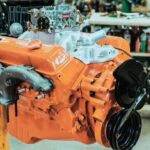
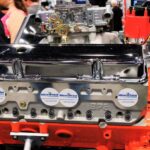
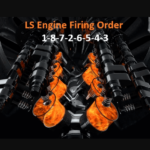
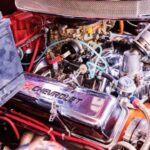
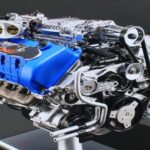
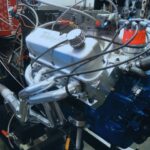
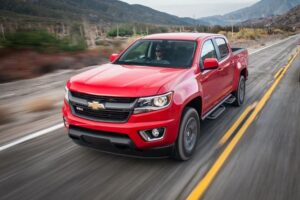

![Read more about the article Chevy Cruze Reliability [How Reliable Are They?]](https://roadsumo.com/wp-content/uploads/2022/02/Chevy-Cruze-reliability-300x200.jpg)